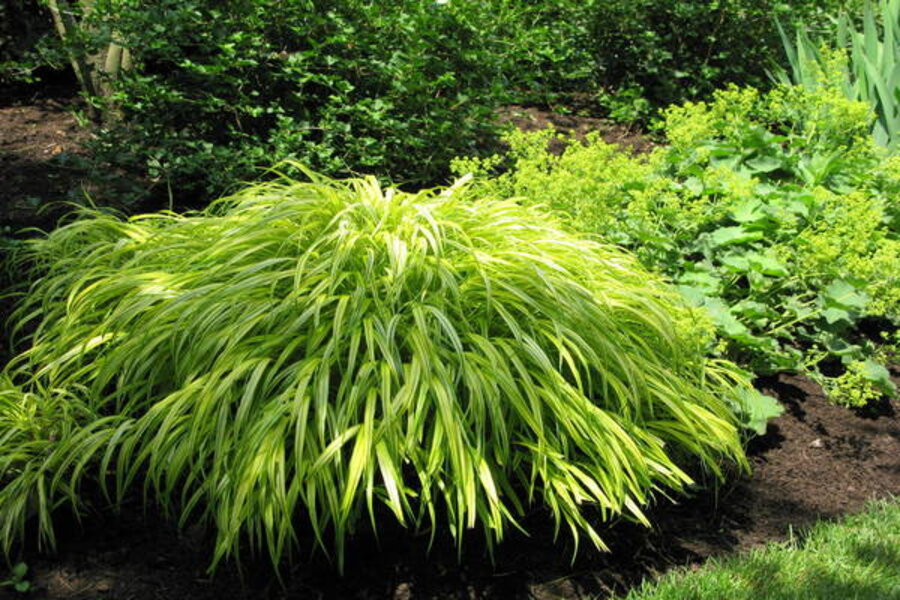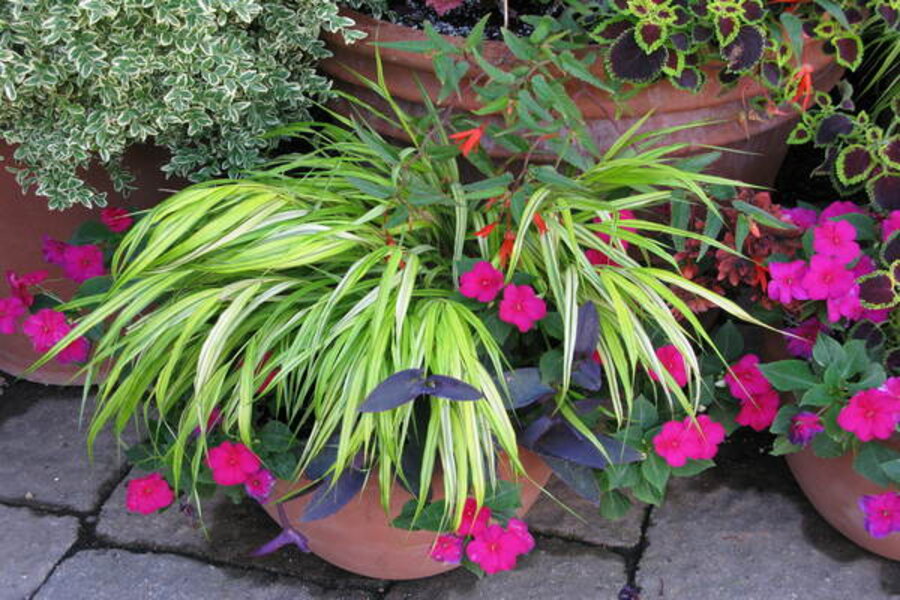Hakone grass: A cascading ornamental grass brightens the garden
Loading...
Every spring the appearance of a stunning new perennial in catalogs or local nurseries is greeted with much excitement among gardeners, especially if the new plant is portrayed as uniquely beautiful, well-behaved, and long-lived.
Although definitely not a hot new perennial being introduced in the market, Japanese forest grass (Hakonechloa macra) is a handsome ornamental grass that's been garnering some excitement the past few years, especially since it was named Perennial Plant of the Year for 2009 by the Perennial Plant Association.
If you think all ornamental grasses are the same, Hakonechloa macra, or Hakone grass as it is sometimes called, will definitely change your mind.
Numerous desirable characteristics set this attractive ornamental grass apart from traditional varieties:
It's an excruciatingly slow creeping, deciduous grass that grows 12 to 16 inches tall with an ample spread of a couple of feet, but is never invasive. The slender stems support gracefully arching, satinlike leaves that cascade downward in a sinuous fashion, splaying out into a graceful mound.
Some cultivars to try
The most commonly offered Hakone grass is the cultivar ‘Aureola’ with golden-chartreuse leaves and a narrow band of green down the center. Some others:
- ‘Beni-kaze’ is a newer selection which, while green all summer, takes on varying shades of red when the weather cools.
- The stunning ‘Nicolas,' also green in summer, becomes flushed with vivid orange and red tones in fall.
- ‘All Gold’ sparkles with all golden foliage that has a metallic, almost luminous quality.
- ‘Albostriata’ is the white-striped form, more sun tolerant than the yellow, and somewhat faster growing than most others.
All are spectacular in the landscape, but to this day, my favorite remains ‘Aureola.'
The common name, Japanese forest grass, indicates that this species is a woodlander in its native habitat. In Japan, it is native to wet, rocky cliffs of Mount Hakone, from which it derives its name.
Although the grass is hardy in USDA Zones 5 to 9, it's important to protect it from cold, drying winds. It should also never be allowed to dry out because it's sensitive to drought conditions.
Hakone grass prefers soil that's evenly moist, humus-rich, and well-drained. It grows equally well in partial shade or in full sun, but the coloration of the leaves is best in part shade.
Design suggestions
Stunningly attractive in shade, ‘Aureola,' with its leaves of bright yellow with thin green stripes, is an ideal foliage foil for hostas, ferns, astilbe, cimicifuga, lady’s mantle, and other shade-loving plants.
Yellow-green “flowers” appear in loose, nodding panicles in midsummer. In the fall, the foliage takes on an orange to reddish cast, then turns light brown before collapsing in winter. Unlike other ornamental grasses, this species does not remain standing to provide interest in the winter, but dies back to the ground.
Short enough to be used for edging a border or cascading gently over a pond creating a waterfall effect, Japanese forest grass is, nevertheless, also flashy enough to be used as a focal point.
It combines well with deep green or blue-leaved plants, is eye-catching near dark-leaved ones, and creates a brilliant color echo when combined with other perennials with golden-hues. It also can be grown in containers. [See second photo above; click on the arrow at the right base of the first photo.]
The grass has almost no insect or disease problems and is not a favorite food of deer, although in my garden, it is a siren song for every passing rabbit. Clumps should be divided in springtime just as new foliage emerges, usually every three to five years, or as necessary.
-----
Betty Earl, the Intrepid Gardener, blogs regularly at Diggin' It. She's the author of 'In Search of Great Plants: The Insider’s Guide to the Best Plants in the Midwest.' She also writes a regular column for Chicagoland Gardening Magazine and The Kankakee Journal and numerous articles for Small Gardens Magazine, American Nurseryman, Nature’s Garden, and Midwest Living Magazine, as well as other national magazines. She is a garden scout for Better Homes and Gardens and a regional representative for The Garden Conservancy. To read more by Betty here at Diggin' It, click here.






